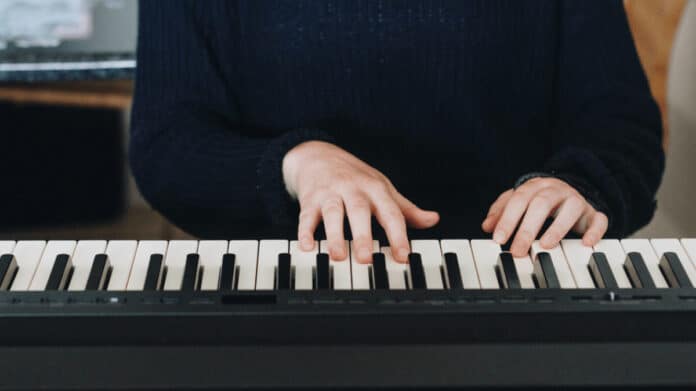
Are you trying to get the most out of your digital piano?
Whether you’re a beginner just learning the basics or an experienced player looking for tips on how to create complex remote performances, there are ways to maximize your instrument’s potential and make music that both sounds good and feels great.
Finding the right balance between sound quality, playability, and affordability can be difficult to achieve. Today we’ll explore some essential guidelines for making the most of your piano playing experience.
Whether you’re a beginner or an experienced player looking to improve your skills and technique, these tips will help guide you on the path toward becoming a masterful musician.
Tune your digital piano regularly for optimal sound quality
Digital pianos are a great instrument to have at home, but it’s important to keep them in top shape for the best sound quality. One key aspect of maintaining your digital piano is to tune it regularly.
Although digital pianos don’t require tuning in the same way acoustic pianos do, they still need adjustments to ensure that they produce the desired pitch and tone. By tuning your digital piano, you’ll get the most out of your instrument and enjoy a crisp, clear sound.
You don’t have to be a professional pianist to appreciate the benefits of a well-tuned digital piano. So, take the time to tune your piano regularly and experience the difference it can make in your musical journey.
Utilize the different sound settings to create unique sounds and tones
To really make the most of your instrument, consider exploring the different sound settings. By utilizing different tones and sounds, you can create truly unique and personal compositions.
Want to create a haunting melody? Try experimenting with the harp or bell sounds. Want to add an electronic edge to a traditional piece? Mix in some synthesizer sounds to create a one-of-a-kind arrangement.
The possibilities are truly endless when you take the time to explore your digital piano’s sound settings. Don’t be afraid to experiment and try new things – you never know what beautiful music you might create!
Use sustain pedals to extend the length of notes
There are a number of tools available to enhance your playing and take your skills to the next level. One such tool is the sustain pedal, which can help to extend the length of your notes and create a more rich and immersive sound.
The sustain pedal works by holding the sound of the notes after you release the keys, giving each note a longer sustain and allowing for smoother transitions between notes.
Knowing when and how to use the sustain pedal is an essential skill for any digital piano player looking to get the most out of their instrument.
Experiment with different rhythms by using metronome or drum loops
Digital pianos offer a vast range of possibilities for musicians, and one way to get the most out of your instrument is by experimenting with different rhythms. With the help of a metronome or drum loops, you can easily experiment with various styles and tempos.
Not only does this allow you to develop your sense of timing and rhythm, but it can also inspire new melodies and ideas you may not have thought of otherwise.
By incorporating different rhythms into your practice routine, you can challenge your skills and take your playing to the next level. So, whether you’re a novice or seasoned player, give it a try and see how experimenting with different rhythms can enhance your playing experience.
Play with both hands to practice coordination and help improve dexterity
Whether you are a seasoned pianist or just starting out, playing with both hands is an essential technique to master. Not only does it improve coordination, but it also helps to build dexterity and strengthen the connection between your brain and fingers.
When practicing with both hands, start slow and gradually increase the tempo as you become more comfortable. Try playing scales, arpeggios, and simple melodies with both hands to get started.
And don’t forget to use proper hand positioning and posture to avoid any strain or injury. Playing with both hands may take some time and patience, but the payoff is well worth it when you see the improvement.
Incorporate music theory knowledge into playing – use chords and progressions as a starting point for creating music
When it comes to playing the digital piano, incorporating music theory knowledge can take your skills to the next level. Using chords and progressions as a starting point for creating music can help you build a strong foundation for any piece you want to learn or compose.
By understanding the relationship between different chords and notes, you can create complex and beautiful compositions that are not only pleasing to the ears but also stimulating to the mind.
The best part? The more you practice, the more you’ll be able to add your own unique style and flavor to your playing.









